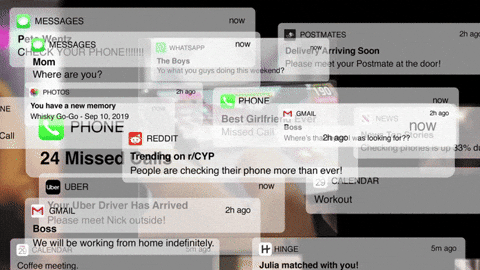I’m the one responsible for content creation here at Bidar HQ. If it’s written, recorded, or published in any form, I’m the one who made that happen—along with all the other things on my plate as the founder/CEO/title of the day.
I also have a hard-and-fast rule that AI doesn’t create my content for me. I have other uses for AI that I’ll tell you about another time, but for content creation, I have a zero-tolerance policy. When you take the time to read or watch something I’ve created, you deserve to hear from me, not ChatGPT.
For the past few years I’ve had a more-or-less regular content publishing schedule:
- Monthly courses or workshops for Six-Figure Systems
- Weekly long-form content of some kind (podcast, YouTube, blog)
- Daily(ish) emails
- Swipe files for affiliates
That’s around 40,000 words per month, if you’re counting. The length of your average romance novel.
Here’s my four-step system for keeping the content flowing while still having a life.
I decide ahead of time
I used to sit down at my desk and ask, “What will I mail my list today?”
That still does happen from time to time, but it’s rare. Today, I’m much more likely to plan out my content in advance.
I know what I’ll be promoting that month, and I build content around those promotions. I put everything into a Notion calendar, where it’s easy to see what’s coming up. I also have drafts in my writing app, where I keep notes and talking points.

When I sat down to write this newsletter, for example, I already had the four step process I’m telling you about written down. All I had to do was flesh it out and add the intro and outro.
It took me a long time to figure out that planning is a separate activity from creating. Those days when I started a writing session with “what am I going to write?” were a waste of my time. They slowed me down.
Which brings me to the second step.
I block creative time on my calendar
I run my life by my calendar. It might surprise you to know that I don’t even keep a to-do list. There’s no Todoist or Asana or TickTick in my toolbox. If there’s a task or project I need to do, it goes on my calendar as an appointment.
And those appointments never get booked during my creative time. That time is sacred.
For me, creative hours are 6AM to 10AM on most days. With rare exceptions, I don’t book appointments during that time. I don’t take phone calls. I don’t do admin work (like bookkeeping or file management).

Another thing I don’t do is look at my phone, listen to podcasts, read books, or watch YouTube. Not during my creative time, and not even before my creative time block starts.
I find that if I start the day with “just a quick check in on YouTube” my entire day spirals out of control. Even my husband doesn’t get a pass here. He knows this is my time to do my most valuable work, and he respects that.
I start with a template
Even knowing ahead of time what I’m going to create, and without unnecessary distractions, it can still be hard to sit down and stare at a blank page. That’s where a template helps me get started.
I have templates for most of my content creation, because most things I write have a specific structure. This article, for example, has an intro, and outro, and four sections. Most of my long-form content shares a similar structure, so I start with that in my template. I also have the “PS” as well as notes at the top about when to publish, if there’s a sponsor, and who should receive the email.
I find that having that information already in the document helps me avoid blank page syndrome. It feels more like just filling in the blanks than creating something from scratch, and there is—in my mind, at least—a lot less pressure when I think of it that way.
I use a timer that ticks
I am, like most of us, easily distracted. Staying on task is hard when there are so many interesting (and sometimes terrifying) things happening. There are emails to respond to, news feeds to be enraged over, reels to scroll through, and it seems like my phone wants to notify me about everything.

How do I ignore all of that so I can get the words written?
First, I turn off every single notification. I don’t need to hear a chime or see a number pop up every time I get another email. That thing would be dinging all day. Every single notification is disabled on my phone, on my laptop, everywhere.
But the real workhorse for keeping me focused is a simple timer that ticks. I use this one. It’s the ticking sound that reminds my brain I’m in focus mode, and that’s what keeps me from hopping over to check my email, or doomscrolling through Reddit, or even deciding now would be the perfect time to clean the bathroom.
When I hear that timer, it’s like a beacon that keeps me focused on the task at hand.
I’m not perfect
I’d love to tell you that this system never fails. That I never face a blank screen or drop the ball and miss a deadline, but I’m human just like you.
Sometimes I ignore my calendar. Sometimes I can’t resist the latest episode of my favorite podcast first thing in the morning. Sometimes I take my phone to bed and find myself scrolling Instagram at 6AM.
For the most part though, this simple system helps me create more of what really matters in my business.
James Clear famously said, “You don’t rise to the level of your goals. You fall to the level of your systems.”
If I set a goal to write 40,000 words per month, I wouldn’t achieve it without the system to back it up. If I didn’t have a scheduling system, a system for protecting my creative time, a system for staying on task, and a system for structuring each piece of writing, I’d waste a whole lot of time just getting to the starting point.
So while I don’t perfectly live up to my content creation system, I’m definitely more prolific than I would be without it.



